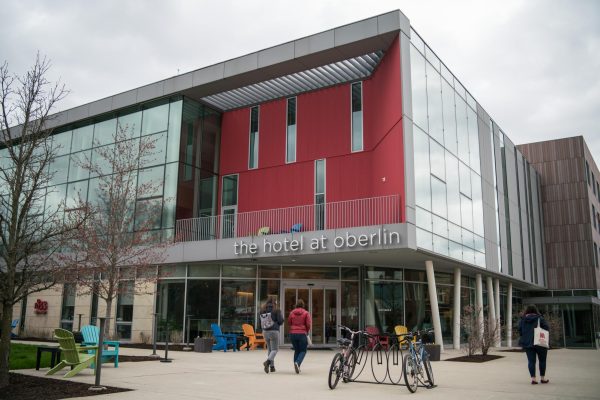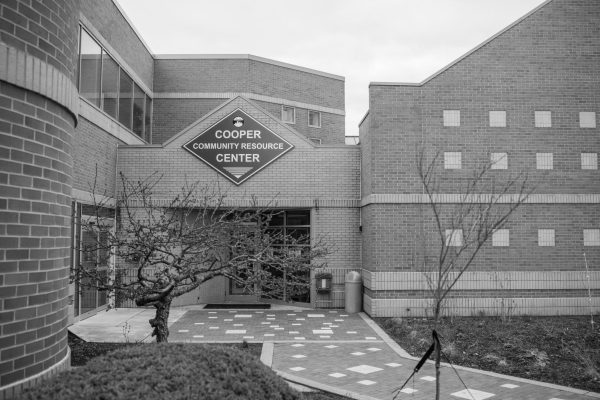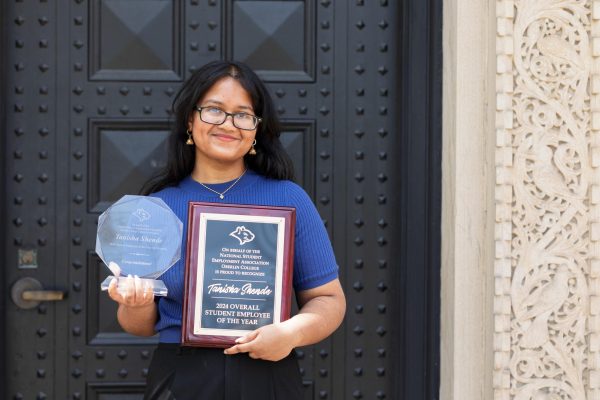Despite Legalization, Medical Marijuana Faces Hurdles
Sunday will mark the third anniversary of the legalization of medical marijuana in Ohio. On Sept. 8, 2016, Ohio House Bill 523 went into effect, allowing those with specific medical conditions to purchase marijuana with the recommendation of a licensed physician.
Since the passage of the bill, the Ohio Medical Marijuana Control Program granted licenses to two medical marijuana dispensaries in Lorain County, Rise and Clubhouse Dispensary, both of which are still active. However, Oberlin native and Lorain County resident John Pardee is one of many who believe that — three years later — medical marijuana still isn’t accessible enough.
“[The system] needs a lot of work,” Pardee said. “It has a long way to go in order to meet the needs of the patient community.”
Pardee and his wife Linda, administrative assistant for the English department and fellow Oberlin native, have a personal connection to marijuana legalization activism. When the Pardees’ son was the victim of a near-fatal car accident, doctors prescribed opioids for pain management. After the opioids began to show dangerous side effects, their son suggested medical cannabis as an alternative, but the Pardees had reservations due to their preconceived notions about cannabis use. Their opinion changed after they looked into medical marijuana’s benefits.
“We did our own research and realized that our son was right, and everything we had been told was wrong,” John Pardee said.
John is now the president and founder of the Ohio Rights Group, formerly the Ohio Medical Cannabis Association, which held its inaugural meeting in Rice Hall in 2012.
Oberlin City Councilmember Kelley Singleton also supports legalization in order to protect those who currently purchase the substance illegally, including college students. He expressed concern for the potential presence of recreational marijuana laced with fentanyl — a synthetic opioid that is 50 to 100 times stronger than morphine.
“The world has bigger problems than some kid smoking a joint,” Singleton said.
In 2017, the Oberlin City Council, including Singleton, voted unanimously in favor of a resolution that recognizes the legality of medical marijuana and encourages growers to build their facilities in Oberlin. However, there are still no current dispensaries within city limits.
Both Pardee and Singleton agree that the process of bringing medical marijuana to Oberlin has been slow. In 2017, Ascension BioMedical was licensed to grow cannabis in the Oberlin Industrial Park with the support of Councilmember Singleton. However, an in-town dispensary has yet to open, and the process of getting a medical marijuana card — as well as the certification process that doctors must undergo in order to recommend the substance — remains tedious and difficult.
Unanimous local support indicates that the slow progress in opening more medical dispensaries comes not from the town itself but from the state government, which is responsible for licensing dispensaries.
In July, the Ohio legislature legalized the sale of CBD oil — cannabidiol — derived from hemp. However, because obtaining recreational marijuana containing THC is still illegal, one must obtain a medical marijuana card in order to purchase cannabis in this form. Furthermore, the doctor-patient relationship must meet certain standards. The relationship must be in good faith, the patient must have one of the 21 qualifying medical conditions, the physician must explain the pros and cons of marijuana use, and the physician must look into the patient’s history with substances.
Physicians within the state may be approved to recommend medical marijuana to patients if they hold an active, unrestricted MD or DO license from the State Medical Board of Ohio and complete two hours of continuing medical education about medical marijuana, according to the Ohio Medical Marijuana Control Program.
College senior Ezra Andres-Tysch, who has worked on several Democratic political campaigns, explains that the next step for marijuana activism is the expunging of records of those both currently and previously imprisoned on marijuana charges.
“As much as recreational marijuana is important … the criminal justice reform aspect of it really comes with good government, and that’s what we need to be moving toward,” Andres-Tysch said.
Pardee agrees. He supports expunging the criminal records of those currently and formerly incarcerated for marijuana-related crimes due to the partial legality of the substance in an ex post facto revision. According to an FBI report, in 2016, the year medical marijuana was legalized in Ohio, there were still 18,731 total arrests related to marijuana — 17,714 due to possession and 1,017 due to the sale of the drug.
“[Oberlin can] lead the way as a compassionate teacher for both drug addicts and for communities that need … medical marijuana legalization the most,” Andres-Tysch said.
According to the Ohio Board of Pharmacy, there were 48,248 patients registered to use medical marijuana in Ohio as of July 2019. According to a 2018 federal estimate, there are 11.69 million residents in the state, meaning that only 0.4 percent of Ohio citizens carry medical marijuana cards, a testament to John’s description of the medical cannabis system as “onerous.”
Pardee believes that his role as a medical marijuana activist is primarily educational. He hopes to pay forward the lesson he learned the hard way by enlightening others about the benefits of medical cannabis.
“It’s going to require citizen activism, so it’s going to continue to require contacting your elected representatives … and telling them how important medical cannabis is to them,” he said.





